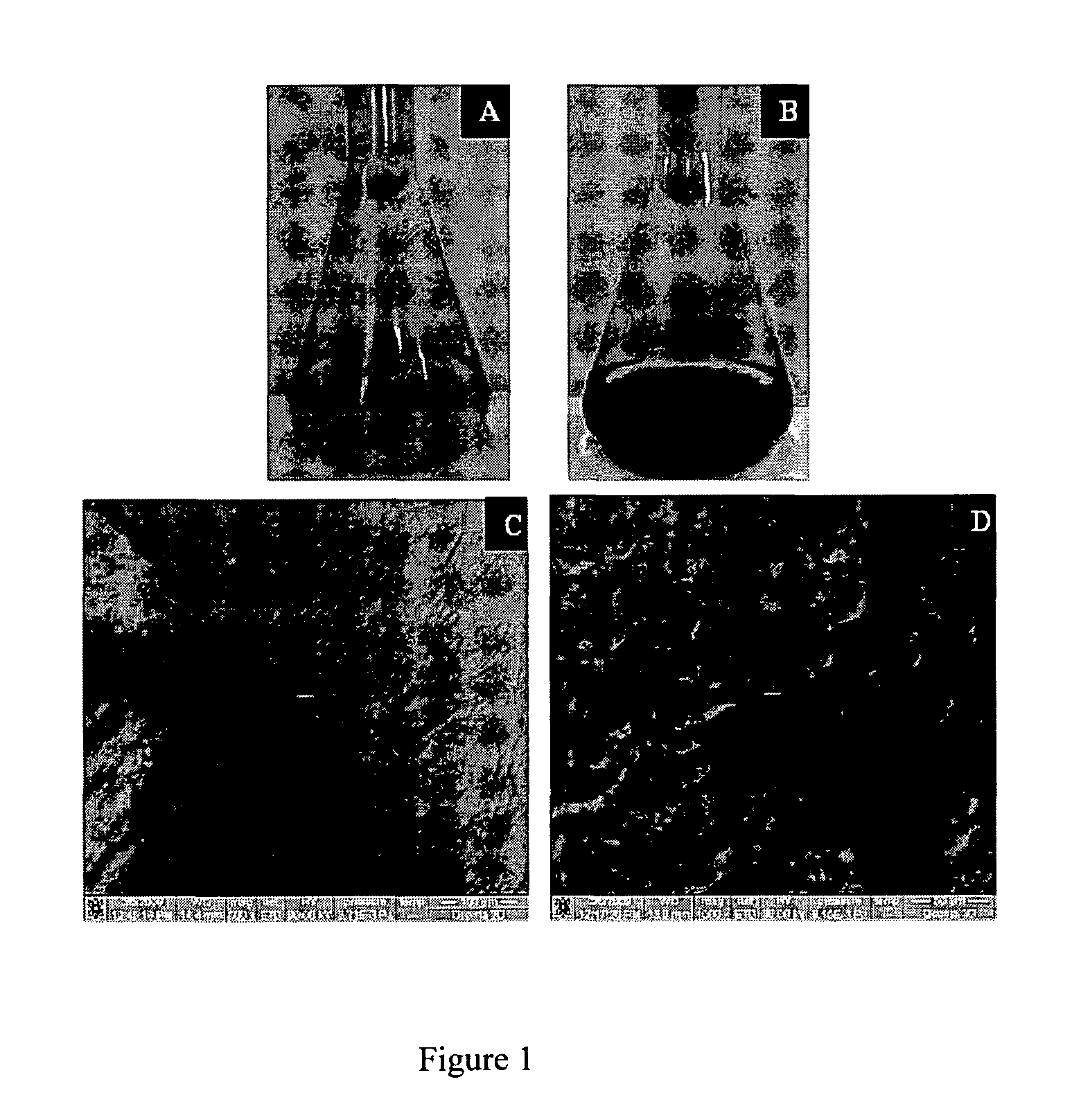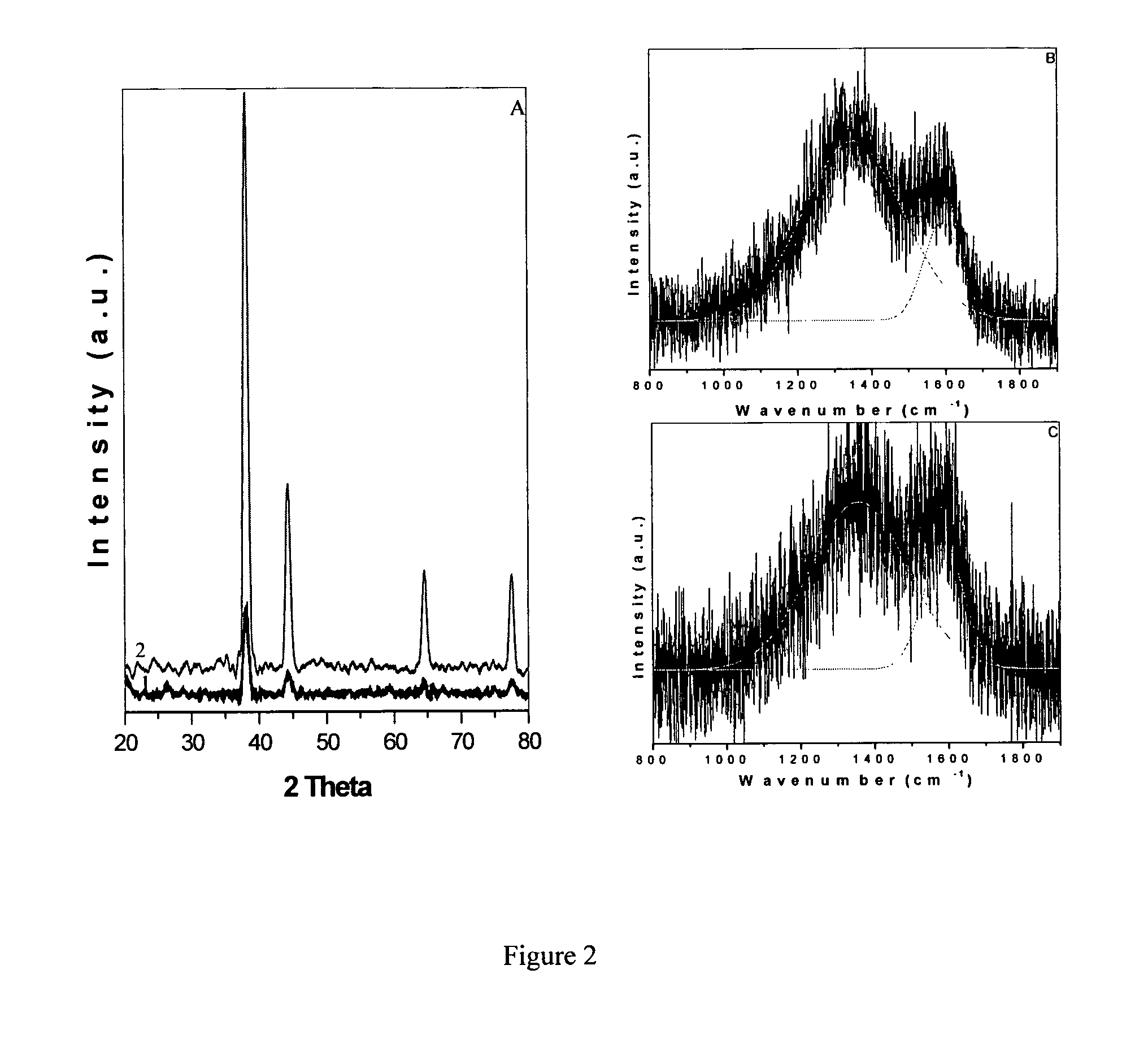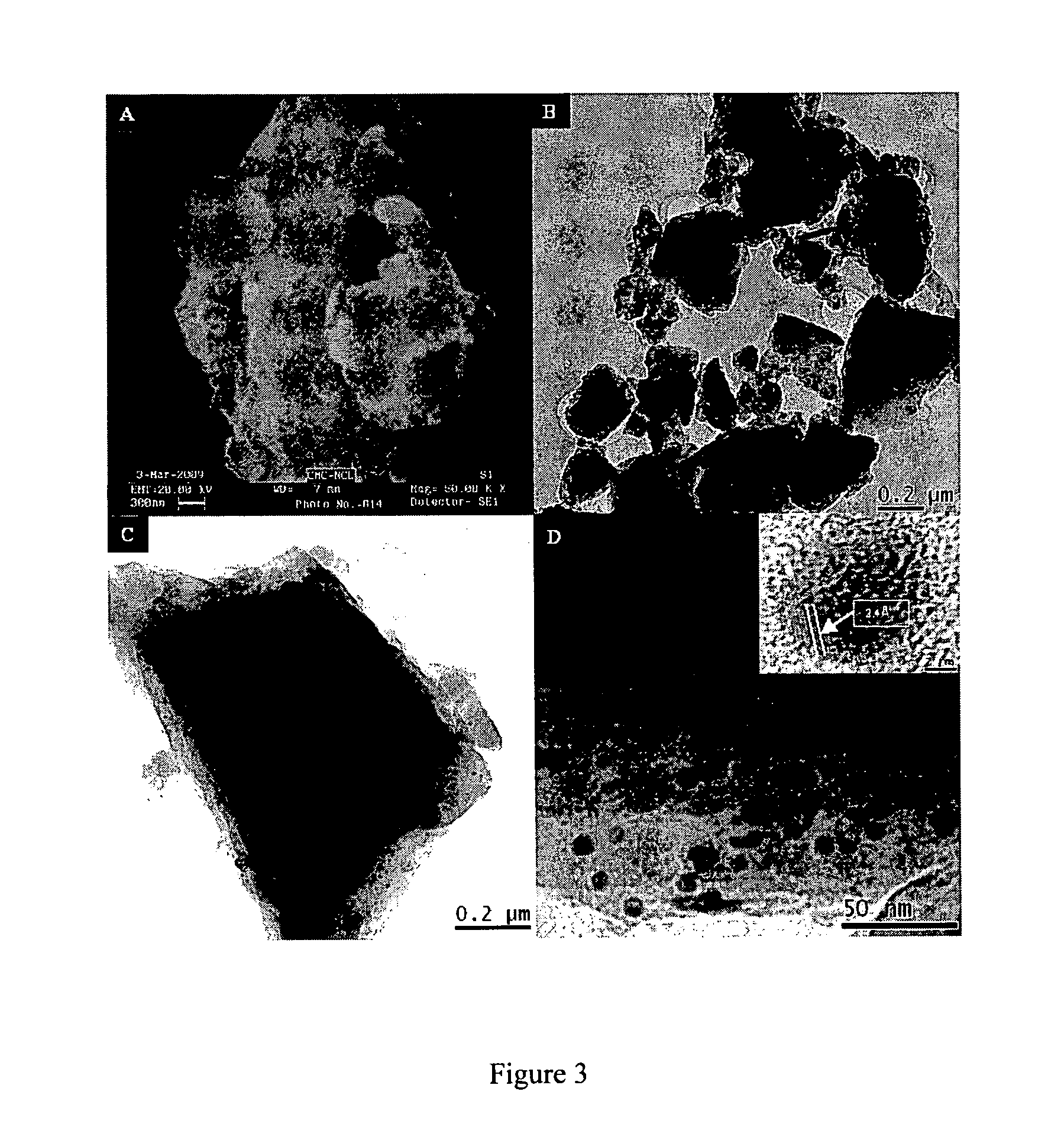DNA loaded supported gold nanoparticles, process for the preparation and use thereof
a technology supported nanoparticles, which is applied in the field of supported gold nanoparticles loaded with supported gold nanoparticles, can solve the problems of no demonstrable data to show penetration of hard embryos, no report on gene delivery through nanoparticles loaded on sharp edged supports, and most studies are restricted
- Summary
- Abstract
- Description
- Claims
- Application Information
AI Technical Summary
Benefits of technology
Problems solved by technology
Method used
Image
Examples
example 1
[0068]In a typical reaction the isolated fungal spores were inoculated in 500 mL Erlenmeyer flask containing 200 mL of maltose-glucose-yeast extract and peptone broth. The spores of Aspergillus ochraceus ITCC 6436 corresponding to ATCC 18500 were allowed to germinate and produce hyphal thread for three days in a shaker (200 rpm) at 37° C. It produced 60 g biomass on wet weight basis that was harvested and three rounds of washing (1000 rpm 15 min) were done with autoclaved Milli-Q® purified water under sterile condition. The biomass was then resuspended in 200 mL of 10M HAuCl4 followed by incubation in a shaker (200 rpm) for two days at 37° C. The product biomass was washed with Milli-Q® purified water and heat treated (600° C. for 6 hours) in a tubular furnace under nitrogen flow. It gave 400 mg product that was ground finely and characterized. The gold concentration in this sample was analyzed using AAS and found to be ˜5 wt %. This sample was denoted as HTC 600-Au. The incubation ...
example 2
[0069]The XRD signal of the biomass dried at room temperature and grained to powder (FIG. 2A curve 1); and calcined in inert atmosphere at 600° C. (FIG. 2A curve 2) were recorded. The XRD patterns of the as prepared sample (curve 1) showed a number of Bragg reflections at d values≈2.36, 2.04, 1.45 and 1.23 Å characteristic of the fcc gold. This clearly showed that the nanoparticles are formed just by the treatment of gold ions with the biomass. The peaks in the HTC 600-Au (curve 2) were sharper than those in the samples prepared without heating, indicating an improvement in the crystallinity upon heating.
example 3
[0070]TEM samples of carbon supported HTC 600-Au were prepared by placing drops of their aqueous dispersions over amorphous carbon coated copper grids and allowing the solvent to air dry. Transmission Electron Microscopy (TEM) images were recorded using a Technai G2 F-30 model operated at an accelerating voltage of 300 kV and JEM 2100 instrument operated at 200 kV. The SEM image in FIG. 3A shows a sharp particle made up of many flat sheet like material. This figure was selected to highlight the sharp tips / edges such materials could possess. The TEM image (FIG. 3B) at lower magnification showed the presence of 50 nm Au nanoparticles embedded in the carbon matrix with sharp edges. In the FIG. 3C apart from the few 50 nm particles plenty of 5 nm particles spread throughout the carbon sheet is observed. Still closer view of the carbon in the FIG. 3D showed wavy edge, showing bundle of sheet arrangement with one sheet getting protruded to form a sharp edge. The HRTEM image (inset FIG. 3D...
PUM
| Property | Measurement | Unit |
|---|---|---|
| diameter | aaaaa | aaaaa |
| diameter | aaaaa | aaaaa |
| weight | aaaaa | aaaaa |
Abstract
Description
Claims
Application Information
 Login to View More
Login to View More - R&D
- Intellectual Property
- Life Sciences
- Materials
- Tech Scout
- Unparalleled Data Quality
- Higher Quality Content
- 60% Fewer Hallucinations
Browse by: Latest US Patents, China's latest patents, Technical Efficacy Thesaurus, Application Domain, Technology Topic, Popular Technical Reports.
© 2025 PatSnap. All rights reserved.Legal|Privacy policy|Modern Slavery Act Transparency Statement|Sitemap|About US| Contact US: help@patsnap.com



